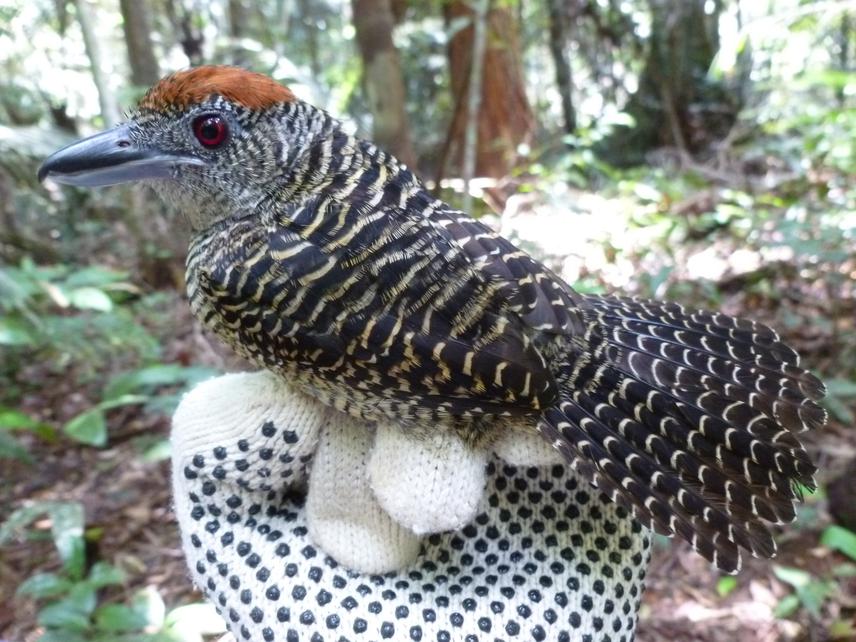Anderson Saldanha Bueno
To uncover the lasting impacts of a hydroelectric dam on forest bird assemblages in an artificial archipelago, and the species characteristics that determine their occurrence in islands.

Fasciated Antshrike (Cymbilaimus lineatus).
The growing energy demand in Brazil, along with its high untapped potential in available latent hydropower, especially in the Amazon basin, has led the Brazilian government to invest massively in the construction of large hydroelectric dams. These have been authorized partly because environmental impact assessments (EIAs) are only conducted after new hydroelectric blueprints are designed and large engineering companies are contracted to build them. Moreover, the short amount of time allocated to conduct EIAs militates against a proper assessment of biodiversity responses to river damming. Hence, there is an urgent need to understand and forecast the long-term impacts on forest biodiversity associated with large dams, strengthen existing EIA protocols, and propose strategies to mitigate their detrimental effects.
The aim of this project is to investigate how bird assemblages are structured in islands created 28 years ago by the Balbina Hydroelectric Dam, located in Central Brazilian Amazon, as well as uncover the species characteristics that determine their occurrence in islands. Five continuous forest sites and a set of 35 forest islands of different sizes, shapes, degree of isolation, and habitat quality will be sampled over two years. Two complementary techniques will be employed to surveys birds: mist-netting and autonomous audio recording. Mist-nets will be set in the forest understorey and will be kept open from 06:00 to 15:00 for two consecutive days each year. All captured birds will be ringed with standardized aluminium rings provided by the Brazilian Centre of Research and Bird Conservation (CEMAVE). Furthermore, autonomous recording units will be left unattended for five consecutive days per plot and programmed to record bird vocal activity throughout the diurnal cycle. Using remote sensing data, we will assess how forest-patch area and shape interacts synergistically with the effects of isolation and forest-canopy disturbance in determining community-wide patterns at our study sites. We will then build models to infer bird species responses to insularization across the entire archipelago of over 3,500 islands based on remotely sensed predictor variables.
Based on the findings of this project and readily available biophysical data for the Brazilian Amazon, such as terrain topography, the minimum/maximum water-levels of projected reservoirs, and species check-lists, it will be possible to assist decision makers in forecasting patterns of species loss within hydroelectric reservoirs that are yet to be approved, thereby strengthening environmental licensing standards.